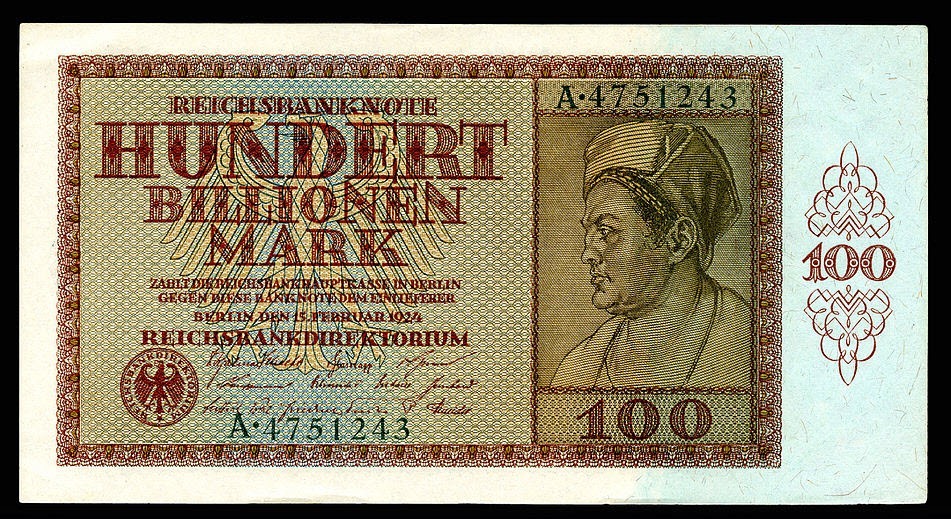A loaf of bread cost 200 billion marks.
A weeks pension would not buy even a cup of coffee.
The mark was freefalling and its value decreasing by the minute.
Restaurants stopped printing menus because by the time the food arrived the price had gone up.
One guy drank the first cup of coffee at 5,000 marks.
The second cup cost him 9,000 marks.
The stories from those days were horrifying and amusing at the same time.
One boy was sent by his mother to buy two bread buns.
One man set out for Berlin to buy a pair of shoes.
Children playing with German banknotes that were reduced to worthless pieces of paper by the inflation.
But the plan backfired.
Germany lost the war and ended up with massive debts.
Soon there was too much money chasing too few goods and inflation spiraled out of control.
Then it accelerated rapidly.
In the first half of 1922, the mark was at 320 marks per dollar.
By the end of the year, it had fallen to 7,400 marks per US dollar.
Eventually, the mark touched a mind-boggling 4.2 trillion marks to one US dollar.
Banknotes of higher and higher denomination started turning up every few weeks.
When the 1,000-billion mark note came out, few bothered to collect the change when they spent it.
The hyperinflation peaked in October 1923 and banknote denominations rose to 100 trillion mark.
The currency had lost meaning.
The 100 trillion mark banknote.
Photo credit: National Numismatic Collection, National Museum of American History.
People stopped dealing in cash and started bartering instead.
Many doctors insisted on being paid in sausages, eggs, coal, and the like.
People exchanged a pair of shoes for a shirt, and some crockery for coffee.
There was widespread economic panic and mistrust.
People began to live as if there were no tomorrow.
Dancehalls and strip bars opened up in the cities, and cocaine sales skyrocketed.
Strangely enough, goods were not in short supply.
There was simply no stable currency to buy them with.
The only objects of real value were tangible assetsdiamonds, gold, antiques, and art.
Soon the country crumbled into petty thievery.
People began stealing anythingsoaps, hairpins, copper pipes, gasoline.
The value of the Rentenmark was fixed at the old exchange rate of 4.2 Rentenmark for one US dollar.
Germany limped back to normalcy but the country was never the same again.
Goodman, the American author and economist.
There was a different temper in the country, a temper that Hitler would later exploit with diabolical talent.
Related:The Trillion Dollar Campaign
A Berlin banker counts stacks of bundled marks.
Kids prepare to fly a kite made with banknotes.
Three kids busy making kites with worthless banknotes.
A display of extremely high food prices during hyperinflation.
Worthless banknotes are collected to be burned.
Children use bundles of banknotes as building blocks.
A woman uses banknotes to light her stove.
A man uses one-mark notes as wallpaper, a more affordable option than even the cheapest rolls of wallpaper.
A shopkeeper stuffs excess cash into a tea chest next to his register.











